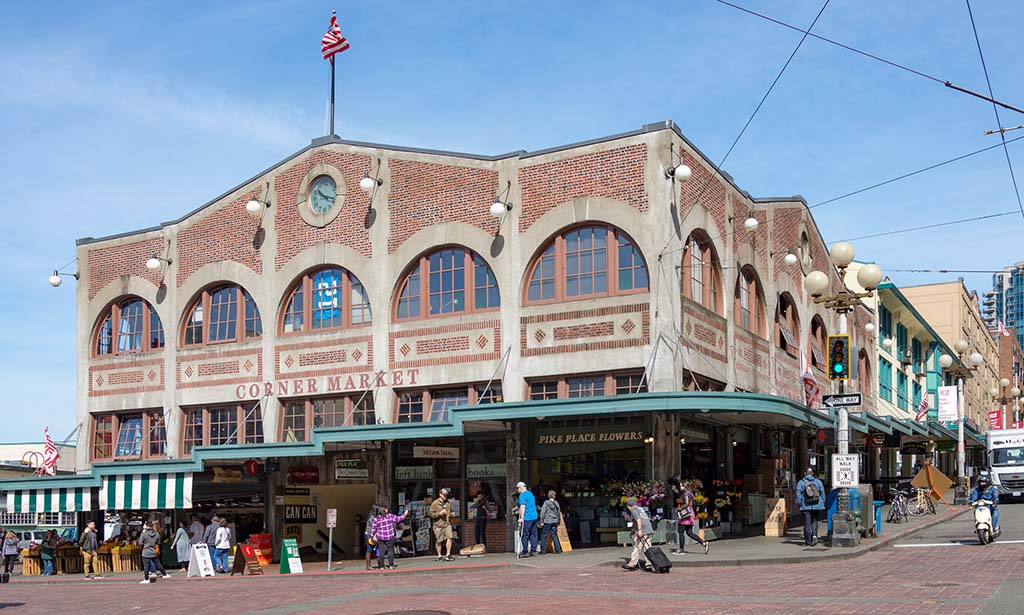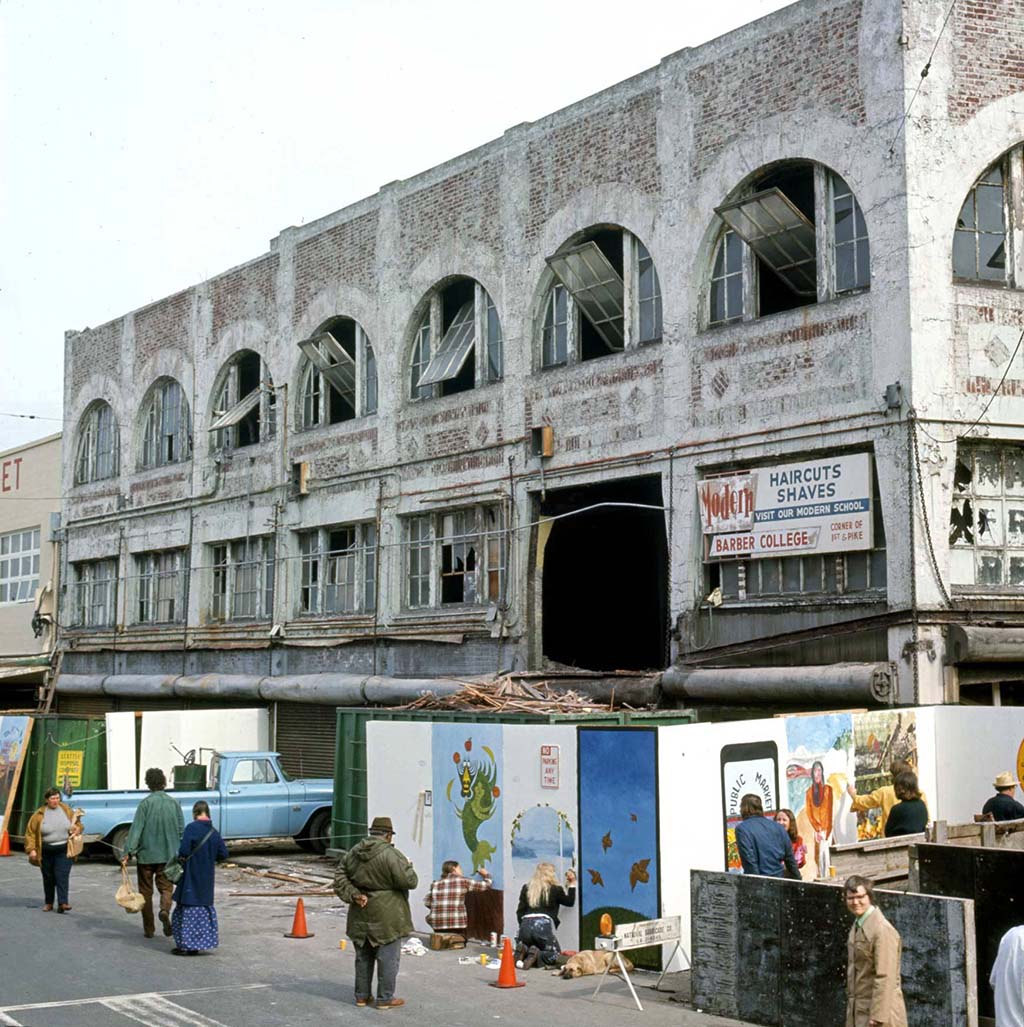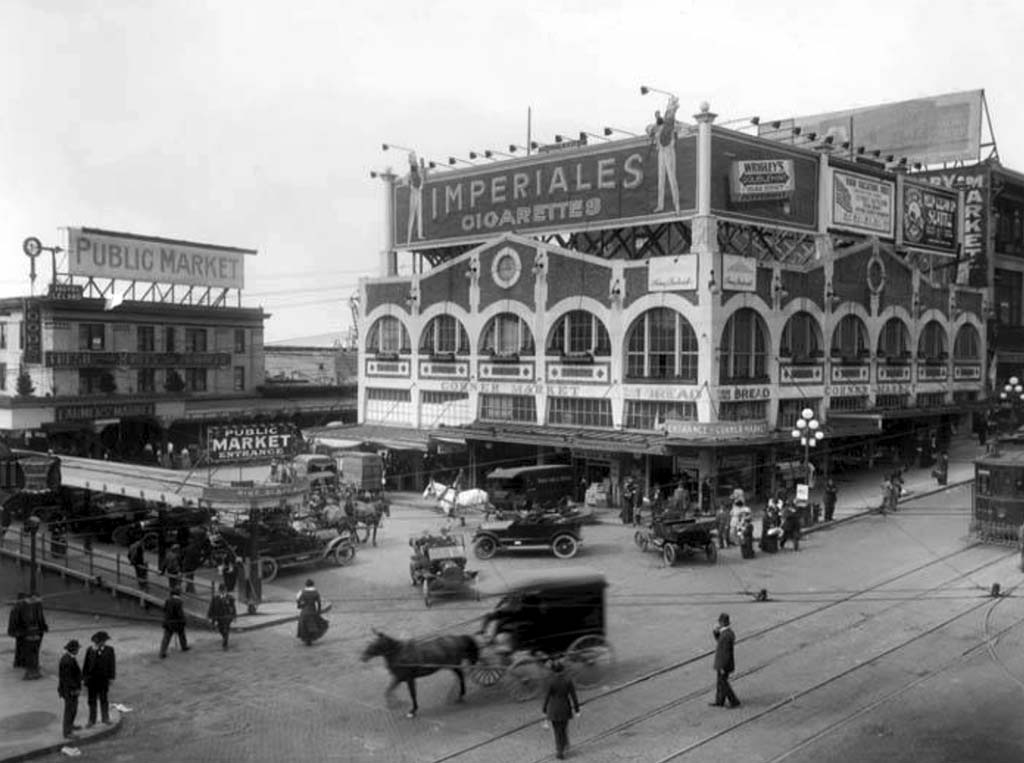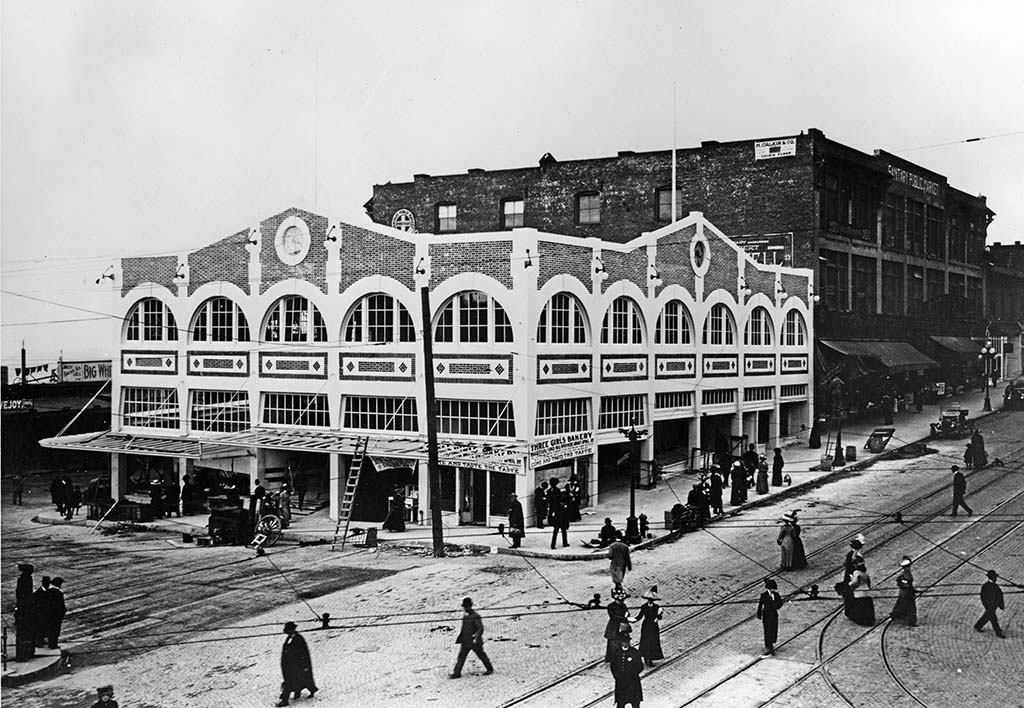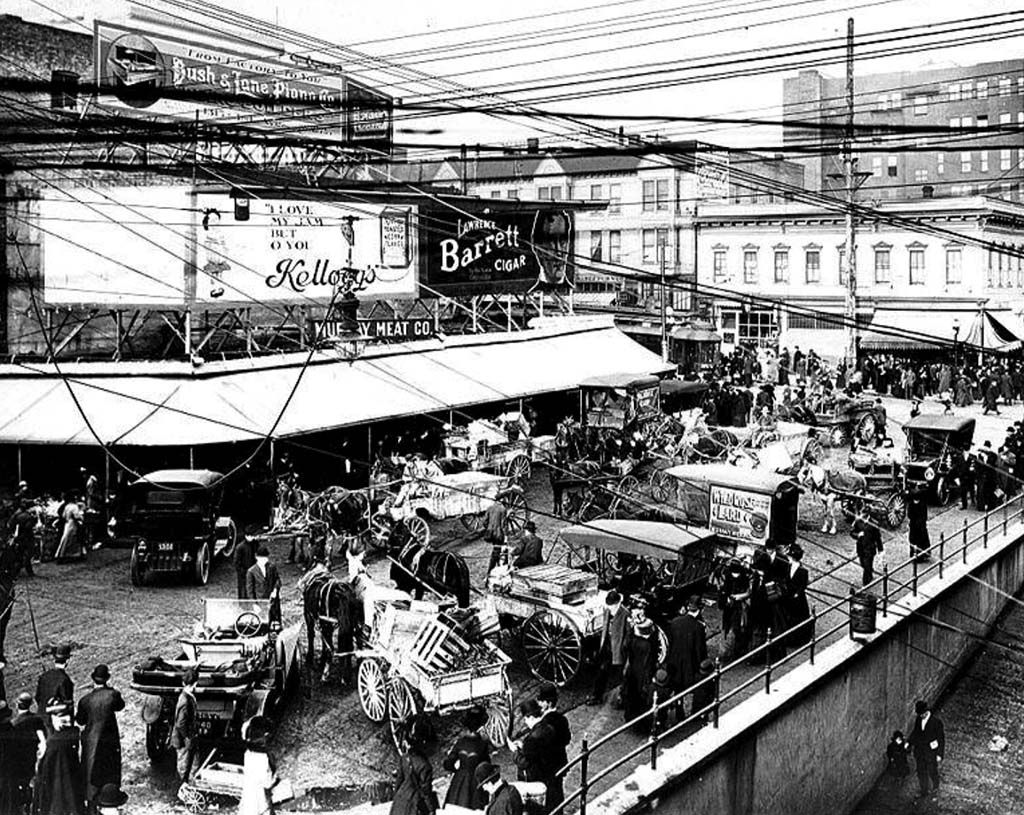-
Corner Market
Northwest corner of 1st and Pike
Northwest corner of 1st and Pike
The Corner Market is the second of two purpose-built market buildings in the neighborhood, the other being the Sanitary Market, which we have just seen. Constructed in 1912 and designed by Harlan Thomas of Thomas & Granger architects, who also designed the Sorrento Hotel and the original Harborview Hospital, it is a fine example of the Mediterranean Revival style within a utilitarian framework. This building replaced the Hotel York, torn down in 1904 due to rapid settling of the foundation caused by the digging of the Great Northern Railway tunnel, 60 feet below your feet.
The Corner Market was built at a cost of more than $50,000 by Cyrus F. Clapp, a real estate investor who, like Frank Goodwin, saw the opportunities presented by the fledgling Pike Place Market. At the time, the Seattle Post-Intelligencer described it as the “most substantial market building yet erected in Seattle.” Judging by the aesthetics we’ve seen in the Goodwin-constructed Market buildings, this wasn’t a very high bar to cross. Of note were the five cold-storage rooms included in its design. Flower boxes located at the edge of the marquees along the second-floor windowsills were added by 1914. Five two-story billboards were installed in 1914 and removed in the 1930s.
Following in the vein of the aesthetic found throughout the rest of the Market buildings, it is the brick inlay and large bay windows that create interest in this utilitarian structure. When it opened, all the shops along 1st Avenue featured open fronts, although most of them have since been enclosed by traditional wooden storefronts. The upper floors, as with the Sanitary Market and the Main Arcade, were accessed via ramps. The entry and stairwell on Pike Street were added in the 1975 rehabilitation.
The original tenant on the top floor was the Pacific Poultry Company. The original location of the Three Girls Bakery was on the corner of 1st and Pike Street, as was the city’s first automatic donut machine. By 1917, the building housed food specialty businesses including butter, egg, and cheese outlets; a coffee, tea, and spice merchant; three delicatessens; a florist; four meat markets; and six produce stands. In 1929, it became the site of Seattle’s first homegrown grocery store chain, Ebe’s Grocery. Originally a food specialty stall established in 1910, Ebe’s expanded into a wholesale and retail outlet. Ebe’s Grocery Outlet officially opened in 1927 and expanded into a 23-outlet chain around the city. In 1935 it became the Tradewell Grocery and continued to operate in the Market until 1938. Tradewell was a prominent Northwest supermarket chain until the mid-1980s.
The property remained in private hands until it was acquired by the PDA in the 1970s. The Market had gone through a steep decline through the 1960s, and by 1974 only 20 percent of the Corner Market’s space was in active use. This would be the first major rehabilitation project undertaken by the PDA. Completed in December 1975 by Karlis Rekevics, working under the direction of Fred Bassetti, the project was undertaken by the city as a model for the entire urban renewal project. Once it was completed, ownership was transferred to the PDA, and after rehabilitation, 12 of the building’s 14 tenants returned.
For your final stop, head east to 1st Avenue. Take a right and keep going until you get to the entrance of the Economy Market Arcade, next to DeLaurenti’s. Walk into the building and take a left at the far side of DeLaurenti’s. Take the elevator to the top level and step to the left for a sweeping view of the Economy Market Atrium.
